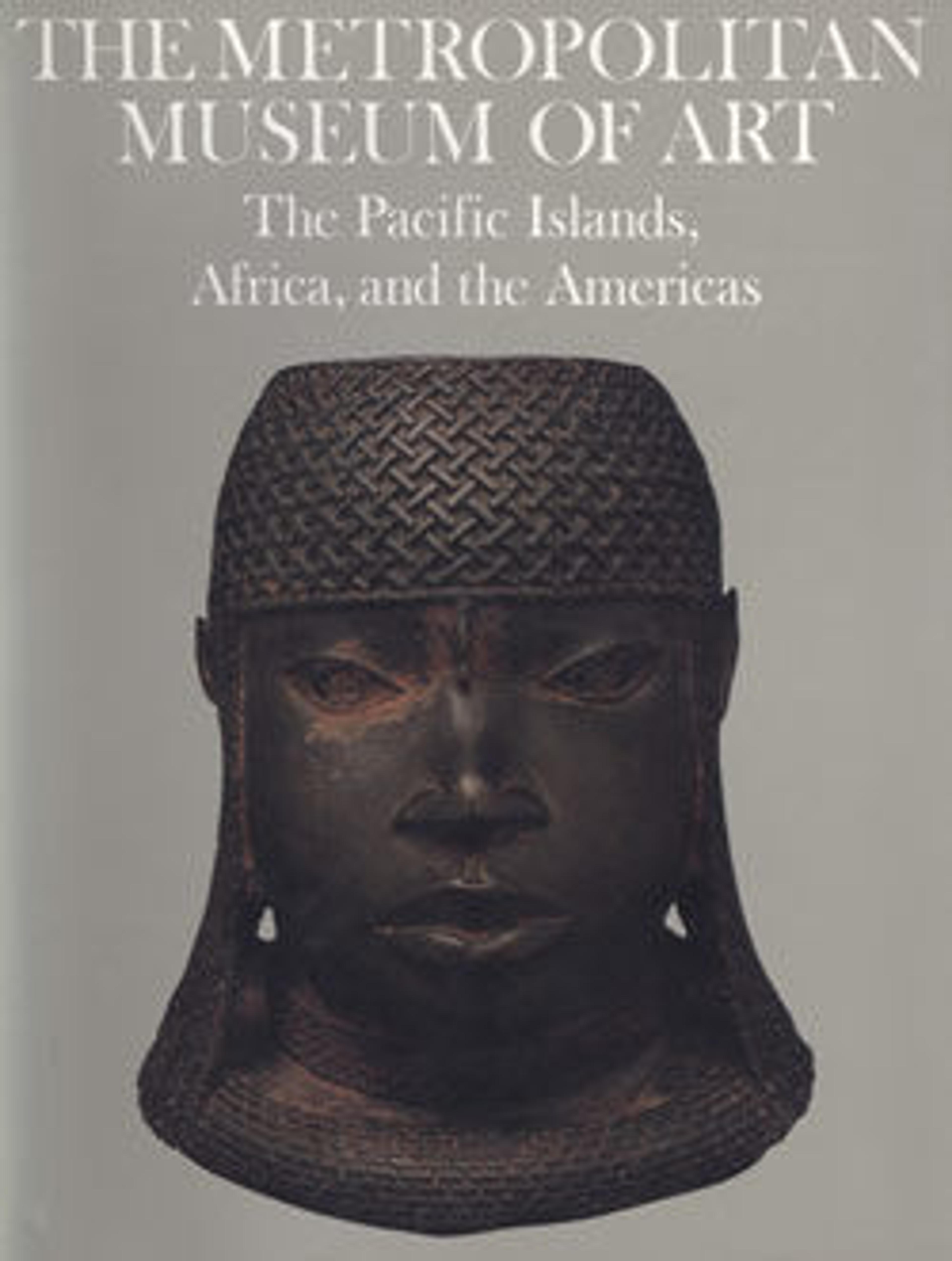Double-faced water spirit crest
This dramatic headdress is more severe, geometric, and linear than most familiar Yoruba sculptures. With extraordinary mastery of carving from a single block of wood, the sculptor has created an expressive work built entirely out of geometric shapes. The face is a disk, the nose a triangle, the cap a hemisphere, and the lips two bars, combined to create a captivating, otherworldly visage. Overlying that face playfully and mysteriously is the long-nosed face of a horned animal that reuses elements of the larger face in a double entendre.
Ijebu water-spirit masks such as this example are used in performances that are part of a festival known as Àgbó. This mask's two hornlike projections are braids that recall coiffures worn by Ijebu priests, queens, and elders. It was apparently worn by a performer, whose body was concealed by a costume attached around the top of the wooden cap, hiding it completely.
Diverse masks refer to the spirit entities that are perceived to inhabit coastal lagoons. Ijebu's ports have historically served as sources of commercial prosperity and cultural exchange. Inspiration for this Ijebu art form has come from the masquerades of neighboring Ijo peoples, a powerful cultural influence. Though several similar headdresses are known, their use remains obscure.
Ijebu water-spirit masks such as this example are used in performances that are part of a festival known as Àgbó. This mask's two hornlike projections are braids that recall coiffures worn by Ijebu priests, queens, and elders. It was apparently worn by a performer, whose body was concealed by a costume attached around the top of the wooden cap, hiding it completely.
Diverse masks refer to the spirit entities that are perceived to inhabit coastal lagoons. Ijebu's ports have historically served as sources of commercial prosperity and cultural exchange. Inspiration for this Ijebu art form has come from the masquerades of neighboring Ijo peoples, a powerful cultural influence. Though several similar headdresses are known, their use remains obscure.
Artwork Details
- Title: Double-faced water spirit crest
- Artist: Ijebu-Yoruba artist
- Date: early 20th century
- Geography: Nigeria
- Culture: Yoruba peoples, Ijebu group
- Medium: Wood, pigment, accumulated surface material
- Dimensions: H. 24 × W. 13 1/2 × D. 15 1/2 in. (61 × 34.3 × 39.4 cm)
- Classification: Wood-Sculpture
- Credit Line: Fletcher and Rogers Funds, 1976
- Object Number: 1976.329
- Curatorial Department: The Michael C. Rockefeller Wing
Audio
993. Kids: Headdress: Janus, Part 1
0:00
0:00
We're sorry, the transcript for this audio track is not available at this time. Please email info@metmuseum.org to request a transcript for this track.
Listen to more about this artwork
More Artwork
Research Resources
The Met provides unparalleled resources for research and welcomes an international community of students and scholars. The Met's Open Access API is where creators and researchers can connect to the The Met collection. Open Access data and public domain images are available for unrestricted commercial and noncommercial use without permission or fee.
To request images under copyright and other restrictions, please use this Image Request form.
Feedback
We continue to research and examine historical and cultural context for objects in The Met collection. If you have comments or questions about this object record, please complete and submit this form. The Museum looks forward to receiving your comments.
